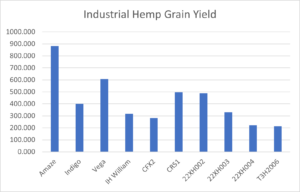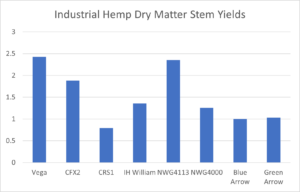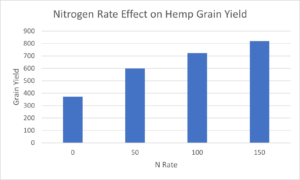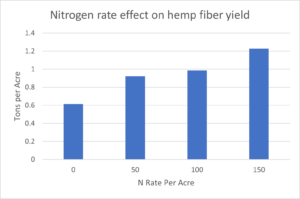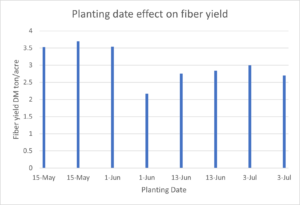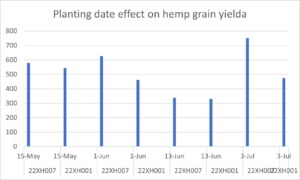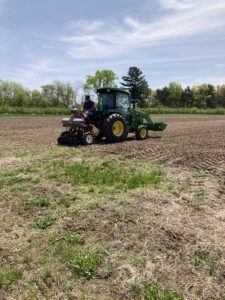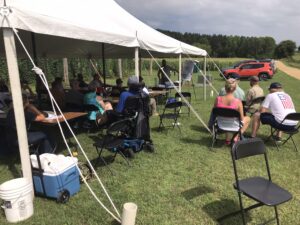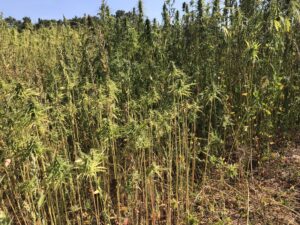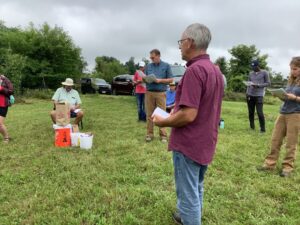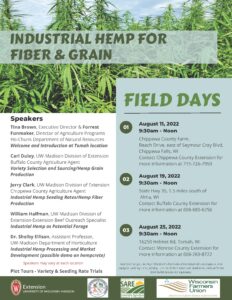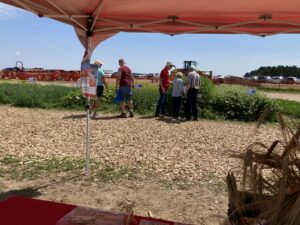Progress report for ONC22-098
Project Information
Western Wisconsin has moved from a major forage producing region to a continuous row crop producing region, mainly a corn/soybean rotation. Adding an environmentally friendly and economically viable crop to the traditional corn-soybean rotation improves the sustainability of our soil and water resources.
Research will be on three Western Wisconsin farms with three different soil types and three different production systems. These include a non-irrigated sandy soil with a conventional tillage system, an eroded (but still productive) silt loam ridgetop soil in a no-till system, and highly productive loamy soil in an organic system. All plots will be designed using random block design and replicated four times to provide statistically reliable data. All locations will use the same research design.
A new variable investigated in 2023 was planting date. Observations from 2019-2022 have shown a mid-June planting date for hemp has resulted in good stands and yields. Grain yield was also measured for the first time in 2023 across two of the locations. Variables measured in 2023 included varieties, planting date, tillage systems, and nitrogen rate application. Data collected included biomass, fiber yield, grain yield, and forage quality. Farm partners have interest in fiber hemp as an emergency forage crop, which is common in parts of Europe. Finally, the project team will calculate rotation soil loss at each farm under traditional corn/soybean rotation and compare with rotations containing hemp and other possible rotation crops. Data will be summarized in a final report following the 2024 growing season.
The major objectives of this project are listed below. Each of the ag professional partners will be responsible for specific objectives.
- Evaluate fiber and grain hemp varieties to determine performance in Wisconsin soils and growing conditions.
- Identify proper planting dates for fiber and grain to meet potential industry needs.
- Evaluate environmental impact (soil loss, soil nitrogen movement) of industrial hemp in crop rotations.
- Measure fiber hemp forage quality as a potential ruminant animal feedstuff (lab analysis only).
- Begin a fiber hemp cost of production database as a guide for Midwest farmers.
- Evaluate nitrogen application rates and fiber yield.
Cooperators
- (Educator)
Research
Adding an environmentally friendly and economically viable crop to the traditional corn-soybean rotation improves the sustainability of soil and water resources.
Research was located on three Western Wisconsin farms with three different soil types and production systems. Systems included a non-irrigated sandy soil with a conventional tillage system, an eroded (but still productive) silt loam ridgetop soil in a no-till/limited tillage system, and highly productive loamy soil in an organic system using conventional tillage. All plots will be designed using random block design and replicated four times to provide statistically reliable data. All locations will use the same research design.
Variables measured included total biomass produced per acre, fiber and grain yield based on variety and seeding dates, nitrogen fertilizer needs for the crop, and basic forage quality. Farm partners have an additional interest in fiber hemp as an emergency forage crop, which is common in parts of Europe. Finally, the project team will calculate rotation soil loss at each farm under traditional corn/soybean rotation and compare with rotations containing hemp and other possible rotation crops.
Grain variety evaluation included 8 varieties and fiber varieties included 11 varieties. Two varieties were classified as dual-purpose. The nitrogen rate study included rates of 0, 50, 100, and 150 lbs./acre in the form of SuperU encapsulated urea. These rates were hand-applied in a small plot design. Nitrogen was applied immediately following planting. The planting date study included four planting dates of mid-May, early June, mid-June and early July. Two varieties were used for all planting dates.
2023 data revealed statistical differences between varieties, planting date, and nitrogen application rates. Some of the data will actually be the second year, as the trials were done on a smaller scale in 2021 at the same locations. Yield ranged from 882 pounds/acre to 214 pounds/acre. Fiber variety trials indicated a high of 2.4 tons of dry matter (DM) per acre to a low of 0.8 tons DM/acre.
The nitrogen (N) rate study revealed a consistent increase in grain and fiber yield as nitrogen rates were increased. Nitrogen rates applied were 0, 50, 100, and 150 lbs./acre in the form of SuperU encapsulated urea. Yields were doubled from the 0 lbs. N rate to the 150 lbs. rate. Grain yield showed a similar pattern indicating hemp yields increase with additional applied N.
The planting date study revealed lower grain yield at the mid-June planting date for the two varieties used in the study. Extremely dry soil conditions occurred during this planting period which may have influenced final yield. Early July planting date resulted in the highest yield for one variety while the mid-May planting date resulted in the highest yield for the other variety.
Data from 2022 and 2023 will be compiled with 2024 data and include a comprehensive report for the three years. Soil erosion benefits will be calculated upon completion of the 2024 growing season.
Educational & Outreach Activities
Participation Summary:
Two field days were held at the Chippewa Falls research location. Updates were given on each objective of the project. April 20, 2023 we held a virtual field day reporting on this project and other hemp related projects in Wisconsin. A local FFA chapter helped with data gathering in 2023 and has taken an interest in industrial hemp relating to animal feed and animal bedding. Two Wisconsin state senators and assembly elected officials stopped at the field days to learn about hemp as a potential economic engine.
A presentation was given to the Wisconsin Land and Water Association at their state conference. Forty-five conservation professionals attended the session. A post-session evaluation indicated n=8, all participants increased their knowledge of hemp fiber and grain production. All indicated they found the information useful and would use it in their work.
https://cropsandsoils.extension.wisc.edu/articles/the-cutting-edge-podcast-episode-35-a-ho-chunk-perspective-on-hemp/
https://cropsandsoils.extension.wisc.edu/articles/the-cutting-edge-podcast-episode-34-hemp-research-updates/
https://cropsandsoils.extension.wisc.edu/articles/the-cutting-edge-episode-26-uw-hemp-trials/
Chippewa County Casual Field Day
July 19 Chippewa County Farm
https://chippewa.extension.wisc.edu/2023/07/13/regional-casual-agronomy-field-day/
Emerging Crops Field Day August 3 Chippewa County Farm
2022 media outreach https://www.leadertelegram.com/country-today/farm/farm-news/agriculture-agents-continue-hemp-study/article_3ec2a921-1fad-53a3-b6b2-99fc23df14a5.html
Learning Outcomes
Farmers increase knowledge about industrial hemp as a conservation crop planting to save soil and as a potential crop to enhance pollinator habitat.
Farmers increased knowledge how industrial hemp can serve as a potential double-crop following a cover crop such as cereal winter rye harvested for forage.
Farmers increase their awareness of cost of production and limitations as a crop due to lack of current processing facilities.
Project Outcomes
Early results of the planting date study has shown potential of industrial hemp to serve as a double-crop within current cropping systems, especially with cover crops harvested as mid summer forage. Western Wisconsin is experiencing high nitrate levels in ground water. Our research on nitrate application rates is geared toward investigating optimum nitrogen application rates for environmental and economic benefits. A second-year of this trial will add to the data set to help determine nitrogen application recommendations. Hopefully, our project will contribute to lower nitrogen rate applications and timings to secure farm profitability while protecting groundwater resources.
An evaluation of cropping systems and how industrial hemp can fit in a system or rotation would be helpful. Interest in keeping something green on the landscape year-round is gaining momentum. Industrial hemp's fit into a shorter growing season lends itself to fitting into a field crop system.
Information Products
- WLAW Presentation (Conference/Presentation Material)
